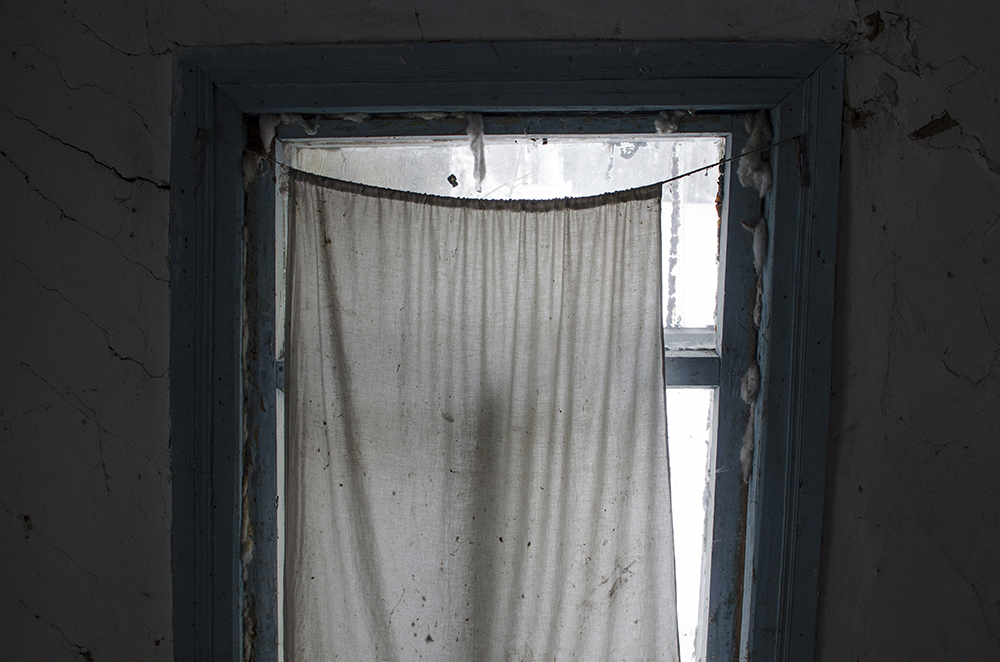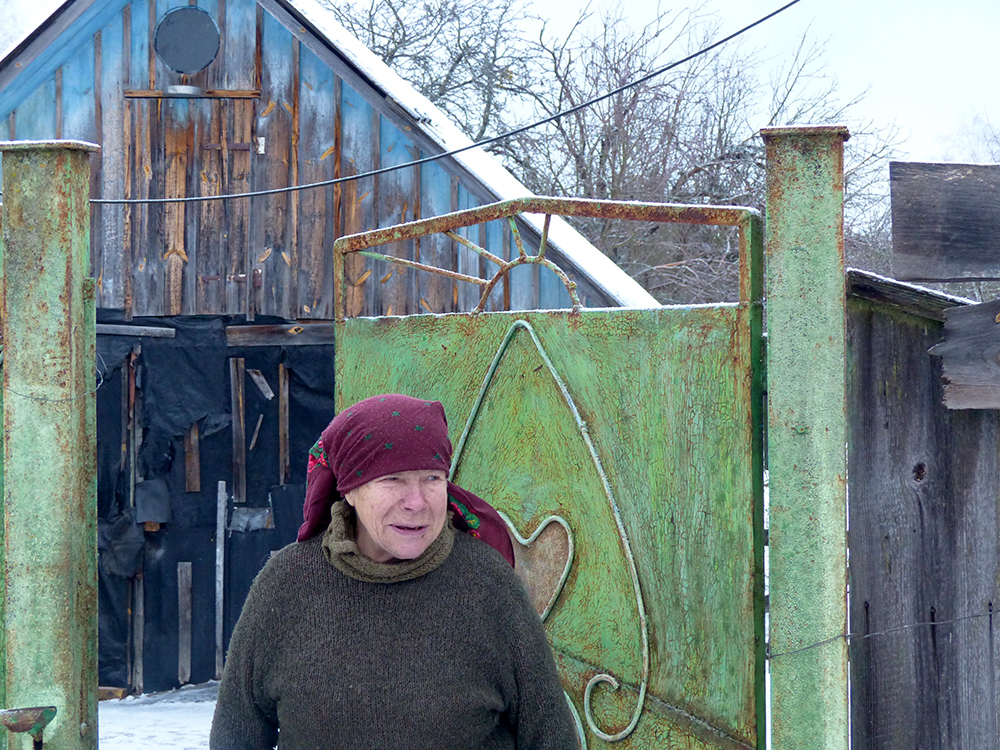Embroidery as Language: Dec.’18 & Jan.’19
With the support of British Council’s Crafting Futures programme, I continued to further my Embroidery as a Language project, still focusing on the unique embroidery culture within the exclusion zone, in order to help to continue the legacy of the Chernobyl Babushka.
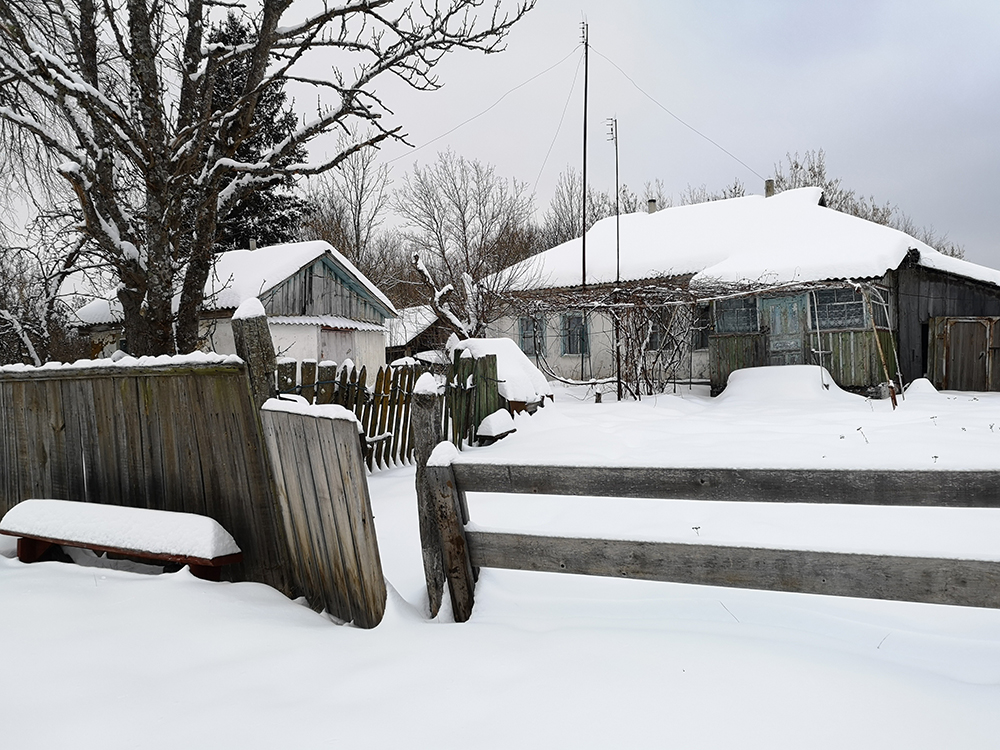
Over two trips to Ukraine in December 2018 (with Ben & Tanya) and January 2019 (with Laura & Lara) I managed to spend five days in the Chernobyl exclusion zone after overcoming political difficulties preventing me from visiting [certain] areas. After much last minute negotiation and through contacts, I eventually was able to travel to some of the remotest villages in the exclusion zone.
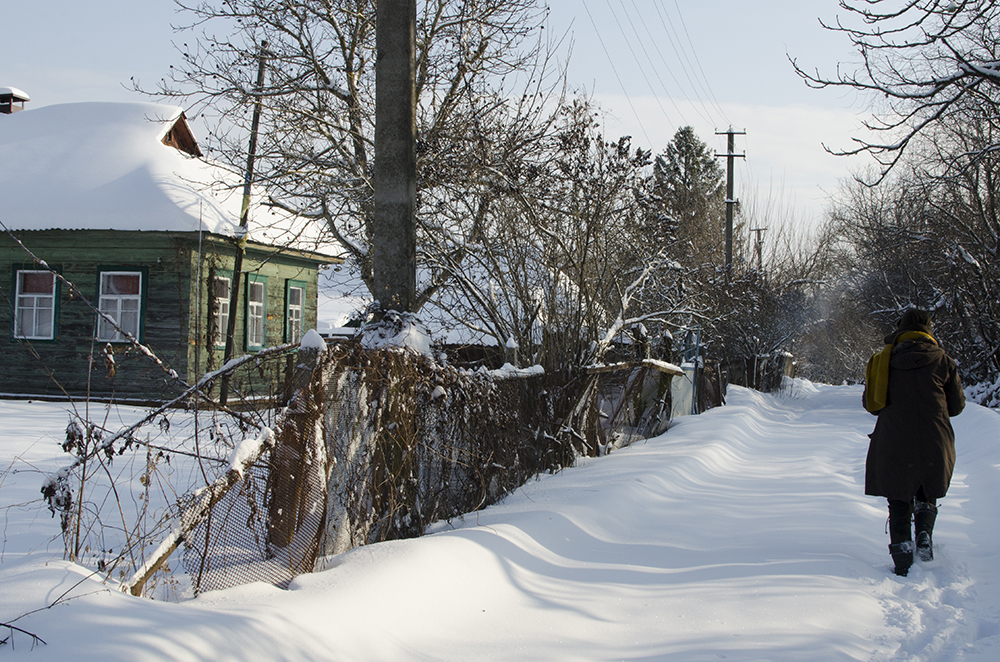
The zone looks incredibly beautiful in the snow but winter is a very difficult time for the self-settlers and many cannot venture outside their homes. Temperatures reached -15° and some roads were impassable, limiting the villages I could visit.
On the first day we had to be escorted by a ‘government envoy’ who allowed us access to 3 villages and unusually had gathered a number of self-settlers in one place. This did allow me to meet more of the Babushkas though the situation meant it was more of a Christmas party with long lost friends than a research opportunity – amazing to witness.
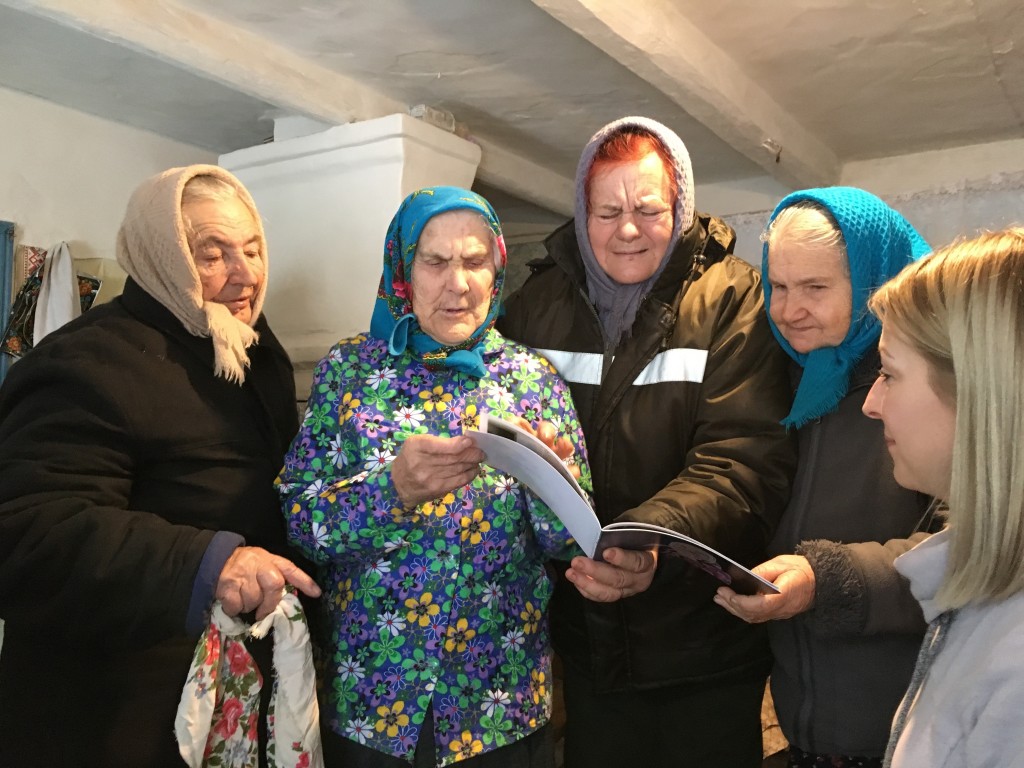
I carried out a number of what always started out as formal interviews but which, seemingly naturally, rapidly deteriorated into somewhat informal ‘chats’ about the weather rather than embroidery practices. They are most concerned with the here and now, though were delighted with the interest shown in their stitched work from ‘when they were young’.
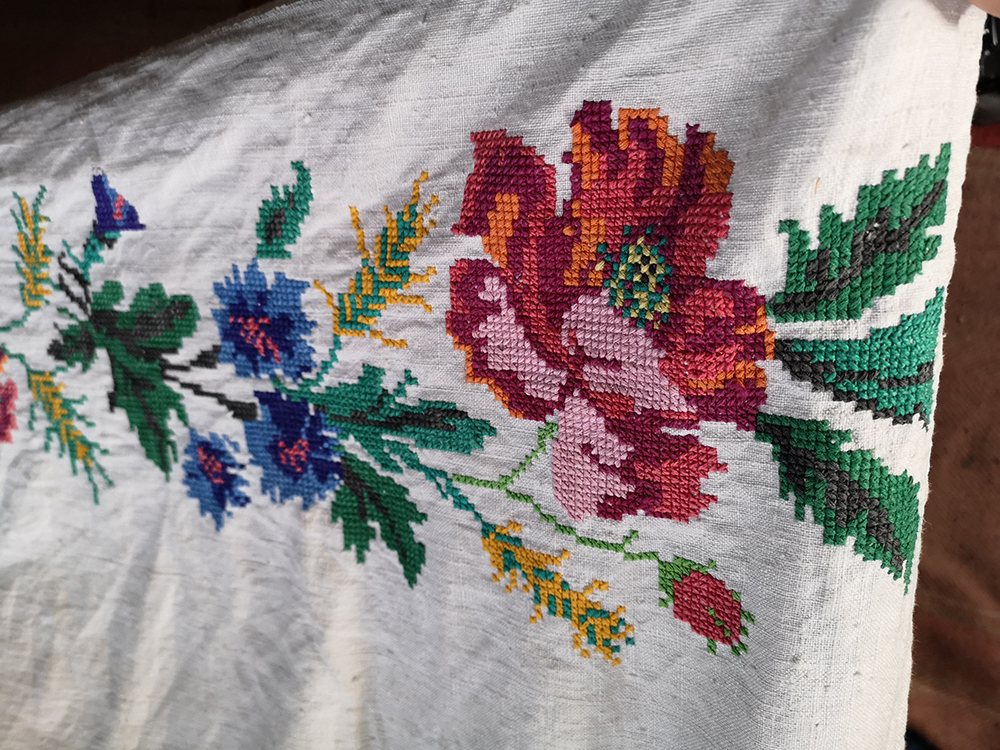
I worked with a number of very special Babushkas spread over five villages, including Kupovate, Parishev and Teremtsi although disappointingly, on my second trip we could not reach the village of Teremtsi again due to deep snow and where Valentina and Tatiana were expecting me, which made me quite upset.
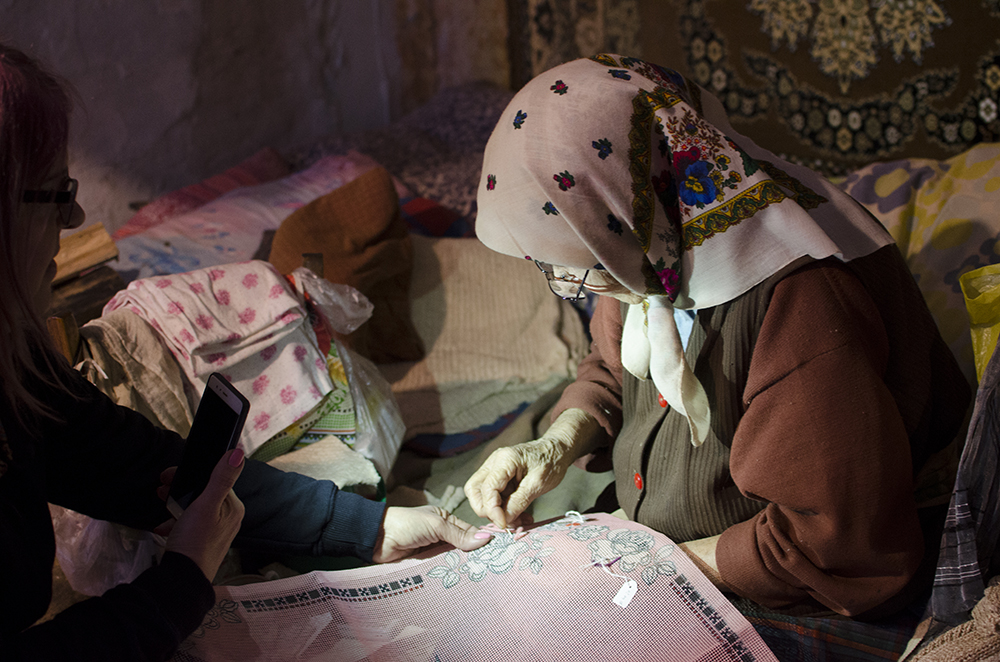
Some nights were spent at Chernobyl Hotel -10 (for workers and tourists) though we moved to more homely and authentic accommodation in the village of Оране on the zone’s border. At Sergai’s house we were served homemade Ukrainian food and (medicinal) vodka. Sergai is extremely knowledgeable about the zone and its people and I discovered much I did not know concerning local politics and customs, including folklore and superstition. He also took me to visit a ‘new’ Babushka – Katerina (83) who loved her embroidery and had many exquisite examples; including a fully embroidered pair of long curtains stitched in the 1980’s.
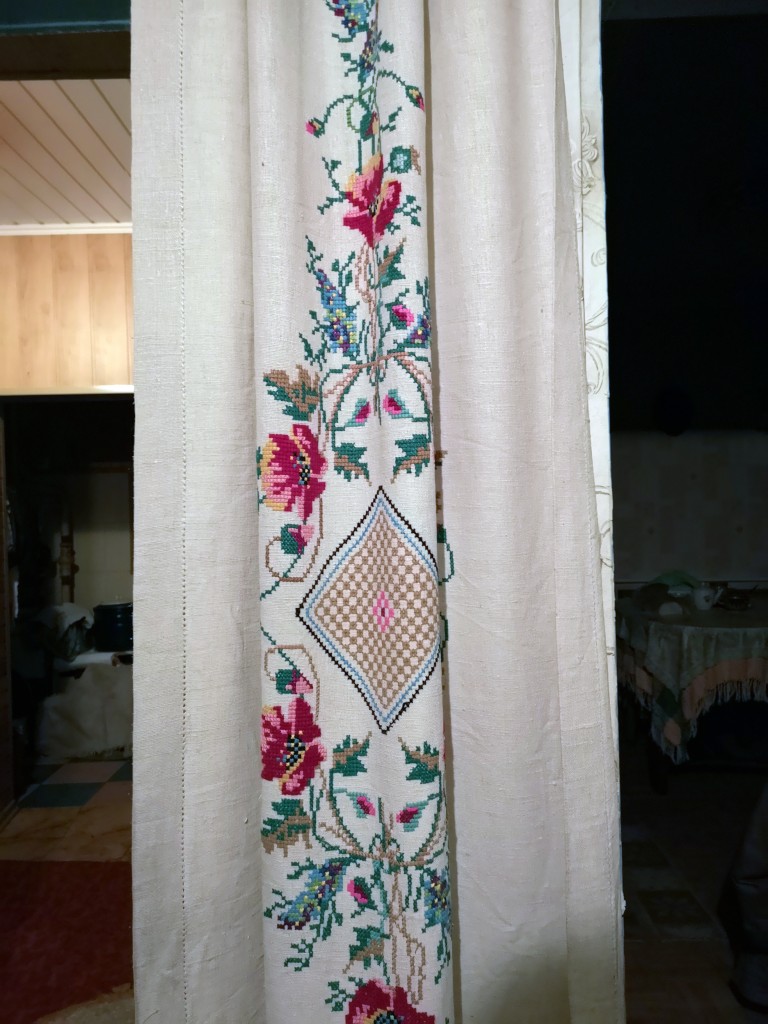
My guides (from chernobylwel.come) were also invaluable giving my work in Chernobyl context and an added insight, for example; the grandmother of Lara who is 81 and lives in Kyiv, blames all illnesses on Chernobyl and continues to wash her oranges with soap.
As with every visit I acquired new knowledge and skills, but on these trips it was much more focused. My list of questions were considered and designed before the trips using a more systematic approach. Political information was more forthcoming due to some intelligent questioning from Ben and I learned much that needs further investigation, as it will certainly affect the continuation of this project and the wellbeing of the remaining population.
In terms of language I added a few new Ukrainian and Russian words to my limited repertoire the most used being ‘chut chut’, meaning ‘just a little bit’, usually employed when trying to refuse refills of homemade vodka, the Babushkas thought it was hilarious for some reason.
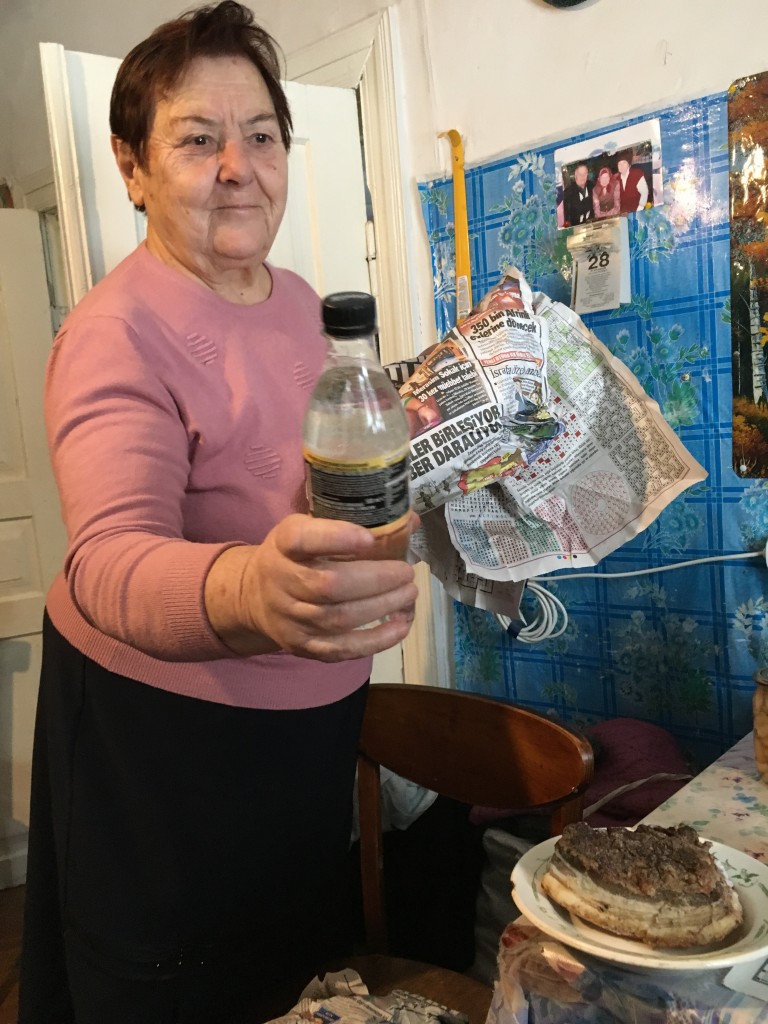
These two visits have made further onsite research much more urgent, each visit indicates how much more there is to learn. The cruciality is now not only due to the age of the population. Although Pripyat is still accessible to tourists the difficulties I had in obtaining permits to visit the outlying villages was evidence of serious political change.
My outlook has also changed in terms of notions of the size of the project, it is much more vast than I envisaged, almost unmanageable and relating to socio-economic aspects of life there that are much more fragile and precarious than previously imagined.
